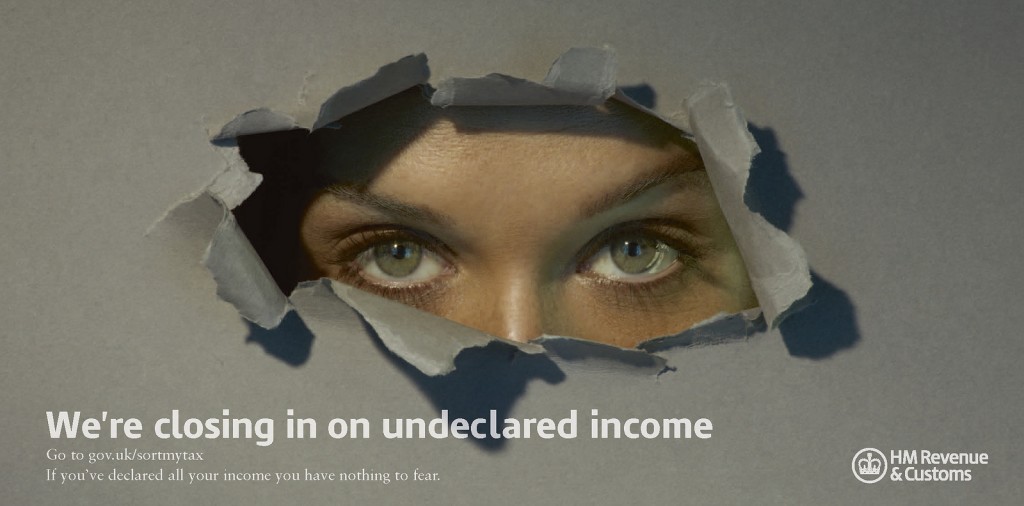I came across this a while ago and found it quite amusing. It’s a poster that’s been up on billboards and buses in the U.K. More intrusively, they also had it popping up on ATM screens while people were waiting for transactions to be completed (which I think is kind of awesome, but also freaked a lot of people out). Patrick’s post on tax avoidance made me think of it again.
There are at least three things going on here that I find interesting.
First, what the U.K. government is trying to work with here is the so-called “watching eyes effect,” whereby the sight of eyes watching you has been shown to trigger more prosocial behavior. There is a huge literature on this, but for a nice sample, see here and here. There’s some debate about how robust the effect is. Whether it can convince people to pay their taxes is an entirely open question.
Second, this is I take it some of the fruit borne by the “nudge unit” set up by the Cameron government (formally known as the Behavioural Insights Team). For a more general assessment, see here. It is, of course, all a downstream consequence of Cass Sunstein and Richard Thaler’s work on choice architecture (here is the blog, which ran out of steam a while back). I have a fair bit of enthusiasm for this approach, although some of my colleagues now take Cameron’s embrace of it as evidence that it is “inherently anti-progressive.”
Third, it shows that it is indeed possible for conservative political parties to adopt a principled stance toward “law and order” issues, rather than just pandering to their base by whipping up fear of street crime. If you think that people should be obeying the law, then that means you think people should be obeying the law — all laws, not just the ones that apply primarily to the lower social classes. If we’re going to be intolerant toward crime and punitive toward offenders, then we should be just as intolerant and punitive toward white collar crime as we are toward street crime.

